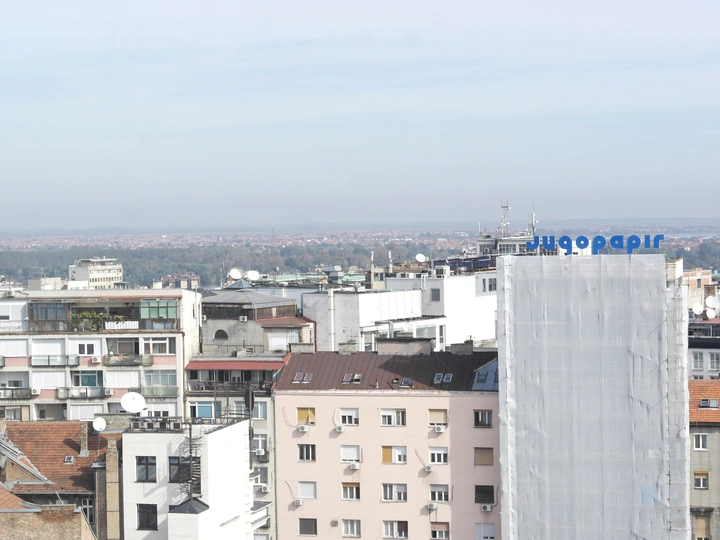Environmentally hybrid Belgrade

Ivana Lovrinčević completed her undergraduate (2013) and master's (2015) academic studies at the University of Belgrade - Faculty of Architecture (UB -AF), where she enrolled in doctoral academic studies (2015). She was a recipient of a scholarship during her undergraduate and master's studies, and a recipient of a fellowship for doctoral studies, from the Ministry of Education, Science and Technological Development with involvement in a scientific project (2016). She actively participates in teaching at the UB-AF, first as a student demonstrator (2013-2016), and then as a teaching assistant at the Department of Architecture (2016-2024). She participated in several scientific gatherings of international and national significance. She is the author of a large number of scientific works in journals and books of international and national significance.
In addition to academic work, she is engaged in architectural design within the architectural studio Ured (2014-2019) and through private practice. As part of the Ured studio team, she received awards at the Salon of Architecture in Belgrade, the Salon of Urbanism in Belgrade and the Salon of Architecture in Novi Sad. With the same team, she won an international award for architecture at the BIG SEE event in Ljubljana, then the international award "Leonardo 2019" at the VIII International Biennale of Young Architects Leonardo Award 2019 in Minsk, Belarus, as well as an international award at the Architectural International Competition event – "Lazar Khidekel award" in Minsk, Belarus. She is the author of a large number of realized projects within the housing and office typology, as well as cultural and commercial interiors.
In the focus of the proposal is the concept of hybridity as an instrument for understanding and producing the built environment, transcending cultural and artificial boundaries. The proposal considers the problem of hyper-urbanization, which is an active participant in the environmental crisis, and the ways in which hybrid architecture represents a sustainable form of urbanity. The attempt is to raise awareness about the position of hybridity in the architectural discipline and the ways in which it participates in the preservation of the environment.
Based on the final stage of my PhD research, hybridity in architecture is considered to be a consequence of transitional periods of culture and society. Based on the transdisciplinary framework and liminality of hybrid architecture, the proposal refers to the identification of hybrid architecture, created during the transition of Yugoslavia towards a socialist society and ideology, and its possibility to participate in (re)shaping the contemporary built environment of Belgrade. The primary goal of the project is to define the role and design potential of architectural hybridity, in the context of the polyvalent state of culture and society, towards the creation of the instrument for developing environmental architecture. The most successful aspect of the ongoing research was the participation in the CA2RE conference, Valencia, and the impact is reflected in the started international dialogue on the topic of the hybridity principles. The expected results are within the specific research and design methodologies, implying an inventive approach to observation and perception, towards the new methods for practicing architecture. Future evolution of the research is expected through developing techniques and methods for practicing hybridity in architecture, organizing workshops and exchanging expertise, due to the emerging need for environmentally approaches to architectural design.